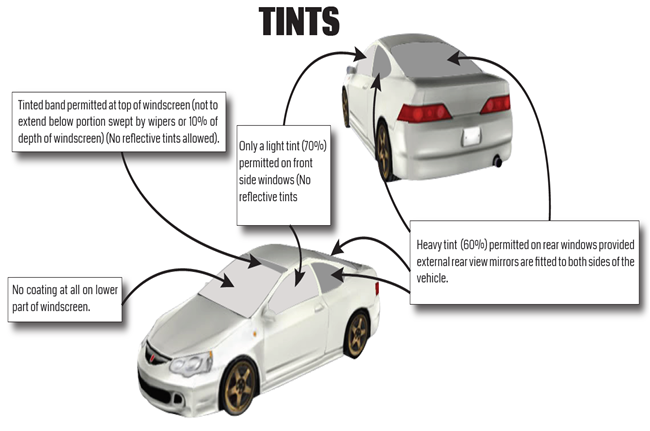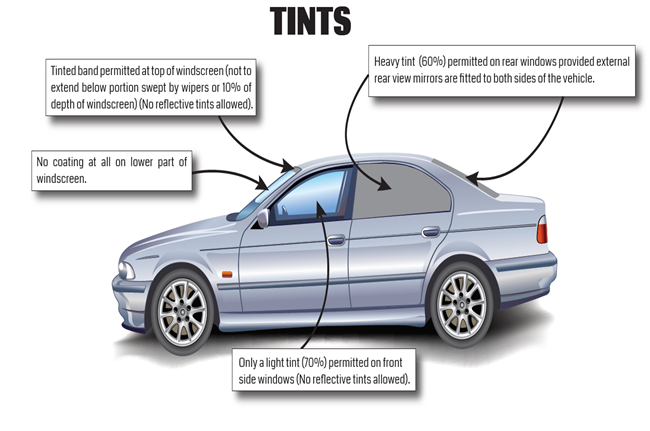Road environment, vehicles and road users are all part of the road transport system. Among them, the human factor is the most complex and dynamic. Whether the road users follow traffic and road rules or adopt a careful and considerate driving attitude has a great bearing on road safety.
Therefore, our focus is on ways to improve the driving attitudes, save lives by reducing collisions and making our roads safer for motorists in Fiji.
The LTA has identified number of key behaviours to that can be changed by the action of enforcement
- Inappropriate speeding,
- Impaired driving through alcohol, drugs (prescription or non-prescription), or fatigue,
- Not using seat belts and child safety restraints,
- Unsafe behaviour towards / by vulnerable road users (pedestrians, motorcyclists, cyclists, young children and older people), speeding;
- Lane discipline offences;
- Failing to confine to the nearside lane
- Inappropriate lane changing
- Tailgating
- Drink driving;
- Using hand-held mobile phone while vehicle is in motion;
- Overloading and insecure load; and
- Careless lane changing
- Failure to comply with traffic signals, signs and road markings
- Not confining to nearside lane’ and ‘Overtaking from the nearside’
- Use of hand-held mobile phone while driving
- Failure to wear of seatbelts both driver and passenger
- Late use of or failing to use indicators.
- Driving too close to the vehicle in front; turning or reversing negligently
How we are doing this
a) Raise awareness of bad driving behavior.
b) Raise awareness of the consequences of bad driving behavior.
c) Identify overlapping stakeholder responsibilities and combine forces to meet the objectives of the Road Safety Strategy.
d) Align the work of stakeholders and effectively build or improve on established partnerships.
e) Improve information sharing across the Coalition
f) Improve public confidence in all stakeholders.
Road deaths are closer to home than you think. Every person in the road toll is someone’s mother, father, brother, sister, or child. We argue and encourage all road users to change the way we think about road safety.
We’re investing in road safety infrastructure to make our roads and roadsides more forgiving if the worst happens – but everyone needs to play a part. The choices we all make behind the wheel need to be smarter and safer.
While we can build safer roads, have safer vehicles and set safer speed limits, the people at the heart of our road system also have a role to play on how we drive.
Everyone should be aware that Road safety is a shared responsibility.
The number of deaths is not just a number, it is real people and could include your family and friends.
The everyday excuses drivers use to justify risky behaviour have no place on the road.
Your decision to drive too fast, drive while tired or to have one more drink can result in serious consequences for yourself and others
We need to be aware of the risks on the road at all times and avoid them, even on familiar roads
We all have a part to play in keeping ourselves and our communities safe on the road.
Examples of good driving practices
A. Lane-changing discipline
i. Always use the left-most lane unless you are overtaking.
ii. Before changing lanes, check your mirrors and glance over your shoulder to check road conditions. Indicate your intentions well in advance.
B. Expressway driving
i. On entering an expressway, start matching your speed to the speed of vehicles on the expressway along the slip road.
ii. When driving on the expressway, give due consideration to other vehicles entering the expressway from the slip road
C. Stay alert
i. Other drivers' intentions can often be anticipated. Look out for signs, e.g. changes in the position of vehicles in lanes; drivers looking in their mirrors; and positions of the driver's hands on the steering wheel.
ii. Look out for inattentive drivers, especially those talking on mobile phones or turning to talk to passengers, as well as vehicles wandering in and out of lanes or following too close to the cars in front.
iii. When being caught in slow moving or stationary traffic, watch out for motorcycles, which may be making their way in-between lanes.
D. Safe speed
i. Keep a safe distance from the vehicle in front. A good guideline is to maintain a distance of a 2-second time gap away from the vehicle in front. Double the time-gap under wet weather.
ii. Maintain a consistent speed where conditions permit
E. Others
i. Do not drive alongside other vehicles, particularly large trucks, for longer than necessary, because the truck drivers may not be able to see you. Also, other vehicles at your side may block your escape route in case of emergencies.
ii. When approaching a stationary or slow moving traffic, use your hazard flashers to warn other up-coming vehicles behind that you are slowing down.
iii. If a driver feels tired while driving, he/she should find a safe place to park the vehicle and take a break before continuing the journey.
iv. Give way to buses waiting to move out from stops.
v. Give due consideration to vehicles which have indicated their intention to change lanes.
Land Transport (Traffic Infringement Notice) Regulations 2017
Traffic Infringement Notice is issued to the offender when they commit any offence on the road under Section 86 and Section 92 (1) of Land Transport Act 1998 The Authorised officer LTA /Police or Municipal under delegated powers are liable for the Traffic Infringement Notice issuance. The infringement notice contains information about the alleged offence and fine amount.
The objectives of these Regulation are to—
a) Enforce traffic safety laws;
b) Deter illegal activities on the road;
c) Ensure that the use of motor vehicles is regulated for the purposes of safety, protection of the environment and law enforcement;
d) Identify and record images of motor vehicles that exceed the speed limit or enter an intersection in contravention of a red light or red traffic arrow; and
e) Establish a system that identifies each motor vehicle used on the road and the person who is responsible for it.
Proceeding for Traffic Infringement Notices
A Traffic Infringement Notice must be issued and despatched by the Authority within 21 days from the date the offence is committed and any Traffic Infringement Notice issued beyond this period is deemed invalid.
A police officer or authorised officer must despatch a Traffic Infringement Notice in respect of the alleged commission of a fixed penalty offence under the Act or the subsidiary laws made under the Act
(a) by serving the Traffic Infringement Notice personally upon the person alleged to have committed the offence, acting in his or her own capacity or as an agent;
(b) where the presence, at any time or for any period of time, of a motor vehicle in a place is evidence of the commission of the fixed penalty offence, by affixing a Traffic Infringement Notice to the vehicle in a conspicuous position; or
(c) by serving through any electronic means as approved by the Authority, including by electronic mail to a valid electronic mailing address submitted by the person to the Authority and verified by the Authority.
Traffic Infringement Notice may also be despatched in the following ways in the case of an offence,
(a) by serving the Traffic Infringement Notice through registered mail sent to the owner of the motor vehicle’s postal address last recorded by the Authority; or
(b) by serving the Traffic Infringement Notice at the owner of the motor vehicle’s physical address last recorded by the Authority upon a person who resides there, provided the person is not below the age of 18 years.
The Authority may notify a person to whom a Traffic Infringement Notice is issued of the person’s alleged commission of a fixed penalty offence under the Act or the subsidiary laws made under the Act and such notification may be made by—
(a) Short Message Service (SMS) messaging to a registered mobile phone contact submitted by the person to the Authority and verified by the Authority; or
(b) by electronic mail to a valid electronic mailing address submitted by the person to the Authority and verified by the Authority.
Where a Traffic Infringement Notice is issued to an agent, the Authority must notify the principal prior to the expiry of the prescribed period and such notification may be made by—
(a) Short Message Service (SMS) messaging to a registered mobile phone contact submitted by the person to the Authority and verified by the Authority; or
(b) by electronic mail to a valid electronic mailing address submitted by the person to the Authority and verified by the Authority.
LTA advises on window tinting
Vehicle owners are once again being advised by the Land Transport Authority (LTA) to use only legal surface films or tint on windscreens and windows. This follows reports that many motorists continue to ignore this on our roads.
Regulation 50 of LAND TRANSPORT (VEHICLES REGISTRATION AND CONSTRUCTION) REGULATIONS 2000 states
A person may apply -
-
(a) surface films onto the windscreen in the permitted area;
(b) to any window, surface films which allow not less than 70% visible light transmittance through the coated window; (LN 49/03)
(c) If a surface film is applied to windows behind the front seat of a vehicle and the luminous transmittance is less than 70% at any point in the visible light range, the vehicle must be fitted with rear vision mirrors on the right and left hand sides. (LN 49/03)
- For the purpose of sub-regulation (l) (a), 'permitted area' means an area of the windscreen not below a horizontal plane—
(a) tangential to the highest point of the areas swept by the windscreen wipers; or
(b) located at a distance from the upper boundary of the windscreen equal to 10% of the depth of the windscreen (measured directly ahead of the driver's seating position), whichever is the lower.
-
A person may apply to the Authority for approval for the application of surface film with luminous transmittance of less than 60% on the windows behind the front seat (LN 49/03)
- Each window (including the windscreen) to which an approved film is applied must be identified by means of a permanent mark fixed to the glass beneath the film or inscribed in the coating and the mark must—
(a) be enclosed within an area of not more than l,000sq.mm and must be within 50mm of the perimeter of the window; and
(b) contain, in characters not less than 2.5mm high and of comparable width, the brand and manufacturer's identification symbol.
-
No film may be applied or fitted to a vehicle unless it is of a type approved by the Authority.
- A person must not supply or sell or offer to sell or supply a surface film, for application to any window on any vehicle, unless the film is of a type approved by the Authority.
The LTA says safety remains the focal point of these strict requirements.
Vehicle owners wanting to tint their windows must apply in writing to LTA stating reasons for using surface film or tint and once approved, they must seek the services of an LTA authorised Tinting Agency that will then place their certified sticker on windscreens and windows upon completion.
The vehicle owner must then seek verification and approval from the LTA after which it will issue a certificate to confirm the vehicle is carrying approved surface film or tint on windscreens and windows.

